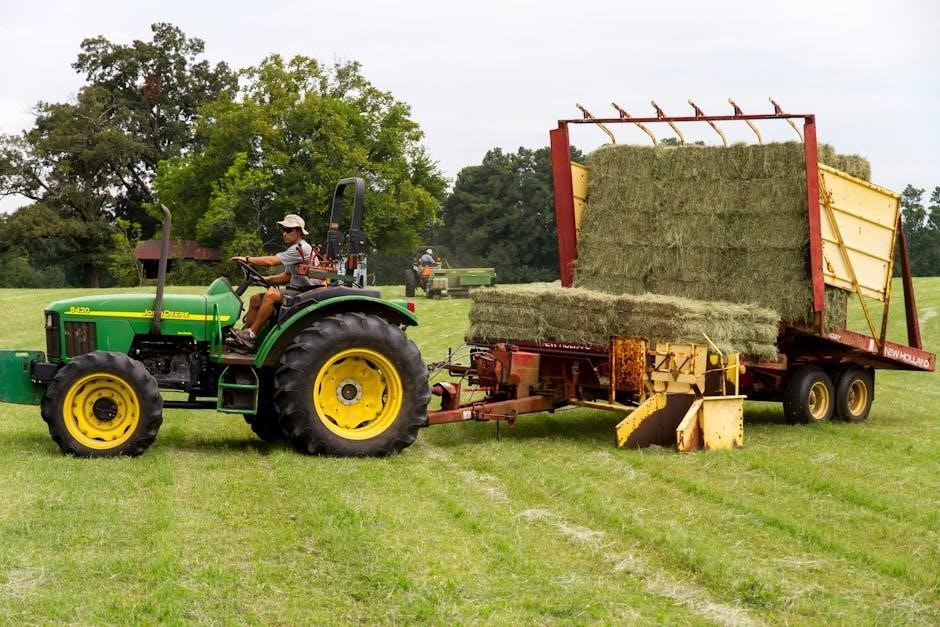The John Deere 7000 Corn Planter Manual is an essential guide for optimal planter performance. It covers safety, maintenance, and operation tips to ensure efficient planting. With detailed instructions on seed metering, depth adjustment, and troubleshooting, this manual helps users maximize planting efficiency and minimize downtime. It is a vital resource for farmers aiming to achieve precise seed placement and high yields in their agricultural operations.
1.1 Overview of the John Deere 7000 Corn Planter
The John Deere 7000 Corn Planter is a high-performance agricultural tool designed for modern farming efficiency. Known for its durability and versatility, it offers various models, including Max-Emerge and Conservation planters. Compatible with 4-row, 6-row, and larger configurations, it ensures precise seed placement and optimal spacing. Advanced seed metering systems and adjustable row units enhance planting accuracy. Regular maintenance ensures prolonged operational efficiency and extends equipment lifespan.
1.2 Importance of the Manual for Optimal Planter Performance
The John Deere 7000 Corn Planter Manual is crucial for achieving optimal performance. It provides detailed guidance on proper operation, maintenance, and troubleshooting. By following the manual, users can ensure accurate seed placement, reduce mechanical issues, and extend the lifespan of the planter. It also emphasizes safety protocols, helping operators avoid accidents and maintain a productive farming environment. Adhering to the manual ensures maximum efficiency and yield in planting operations.
1.3 Brief History and Evolution of the John Deere 7000 Planter
The John Deere 7000 Corn Planter has a rich history, evolving from earlier models to meet modern farming demands. Introduced with innovative features like the Max-Emerge system, it quickly became a favorite among farmers. Over time, enhancements such as folding frames, improved seed metering, and advanced technology integration have been added. This planter’s evolution reflects John Deere’s commitment to precision agriculture, ensuring it remains a reliable and durable tool for efficient corn planting. Its design improvements continue to support farmers in achieving higher yields and productivity.

Safety Guidelines and Precautions
The John Deere 7000 Corn Planter Manual emphasizes critical safety measures to prevent accidents. It outlines general safety tips, specific warnings, and emergency procedures to ensure safe operation and minimize risks while planting.
2.1 General Safety Tips for Operating the Planter
The John Deere 7000 Corn Planter Manual highlights essential safety practices to ensure safe operation. Always wear protective gear, including gloves and safety glasses, when working with the planter. Ensure the planter is securely attached to the tractor and properly calibrated before use. Keep loose clothing tied back and avoid reaching into moving parts; Never leave the planter unattended while in operation, and always follow proper shutdown procedures to prevent accidents.
2.2 Specific Safety Warnings and Hazard Precautions
Always be aware of potential hazards when operating the John Deere 7000 Corn Planter. Avoid wearing loose clothing that could get caught in moving parts, and ensure all protective guards are securely in place. Never touch heated components like seed meters or hydraulic lines, as they may cause burns. Be cautious of uneven terrain to prevent tipping, and always maintain a safe distance from the planter during operation. Adhere strictly to the manual’s safety guidelines to minimize risks.
2.3 Emergency Procedures and First Aid
In case of an emergency, stop the planter immediately and disconnect the power. For burns from hot components, apply cool water and seek medical help. Treat injuries promptly; keep a first aid kit nearby. If clothing gets caught, shut off the engine quickly to prevent further harm. Always have a fire extinguisher accessible and know basic life support techniques. Stay prepared to handle unexpected situations efficiently.

Pre-Operation Checks and Preparation
Conduct a thorough visual inspection, check lubrication levels, ensure proper tire pressure, and verify wheel alignment. Perform a test run to confirm all systems function correctly.
3.1 Visual Inspection of the Planter Before Use
Begin by visually inspecting the planter for any signs of wear or damage. Check the seed meters, chains, sprockets, and discs for proper alignment and condition. Ensure all bolts and fasteners are secure. Look for hydraulic leaks, damaged tires, or misaligned rows. Verify that all safety guards are in place and functional. This step ensures the planter is ready for safe and efficient operation.
3.2 Lubrication and Fluid Checks
Regular lubrication and fluid checks are critical for maintaining the John Deere 7000 Corn Planter’s performance. Inspect the hydraulic fluid level and top it off as needed. Grease all moving parts, such as row unit bearings and chains, to prevent wear. Check for any signs of fluid leaks and ensure proper viscosity for optimal operation. Proper lubrication ensures smooth functionality and extends the equipment’s lifespan.
3.3 Tire Pressure and Wheel Alignment
Proper tire pressure and wheel alignment are essential for stable operation. Check tire pressure regularly, adhering to the manufacturer’s specifications in the manual. Ensure the planter’s wheels are aligned correctly to maintain even ground contact and prevent uneven seed placement. Misalignment can lead to poor planting accuracy and reduced productivity. Regular checks help maintain optimal performance and ensure consistent seed spacing and depth during planting operations.

Attaching and Detaching the Planter from the Tractor
Attach and detach the planter safely by aligning the tractor and planter properly. Secure all connectors and hoses firmly. Always follow the manual’s guidelines for proper attachment and detachment procedures to ensure stability and avoid damage during transport or storage.
4.1 Step-by-Step Guide to Attaching the Planter
Attaching the John Deere 7000 Corn Planter to your tractor requires careful alignment and secure connections. Start by aligning the planter’s hitch with the tractor’s drawbar. Ensure the hydraulic hoses and electrical connectors are properly attached. Tighten all bolts and couplers to the specified torque values outlined in the manual. Double-check all connections for stability and safety before operating. Always refer to the manual for precise torque specifications and connection guidelines.
4.2 Proper Detachment Procedures
Detaching the John Deere 7000 Corn Planter safely involves lowering it to the ground and disconnecting all hydraulic hoses and electrical connectors. Remove the hitch pin from the tractor’s drawbar and lift the planter slowly using the tractor’s hydraulic system. Ensure all components are secure before transporting. Always refer to the manual for torque specifications and proper detachment steps to avoid damage or injury.
4.3 Securing the Planter for Transport
For safe transport, fold the planter completely and use heavy-duty straps or chains to secure it to the trailer. Ensure all hydraulic hoses and electrical connectors are stored properly to prevent damage. Check tire pressure for stability and balance the planter on the trailer to avoid tipping. Cover vulnerable components like seed meters and use safety flags for visibility. Always double-check all securements before moving to prevent accidents and ensure safe transportation.

Operating the John Deere 7000 Corn Planter
Operating the John Deere 7000 Corn Planter involves starting and stopping procedures, adjusting seed spacing and depth, and monitoring planting rates for optimal performance and precision.
5.1 Starting and Stopping the Planter
Starting the John Deere 7000 Corn Planter involves conducting a safety check, ensuring all components are properly engaged, and following the manual’s startup sequence. Allow the planter to reach operating speed before beginning planting. For stopping, disengage the seed meter, shut off the planter, and secure all moving parts. Proper shutdown ensures safety and prevents damage. Always follow the manual’s guidelines for smooth operation.
5.2 Adjusting Planting Depth and Seed Spacing
Proper calibration of the seed meter ensures accurate planting depth and seed spacing. Adjust sprocket combinations based on seed size and desired population. Ensure tire pressure matches soil conditions to maintain consistent depth. Regular checks prevent over-seeding or skips. Accurate depth and spacing optimize germination and yield, ensuring efficient planting operations.
5.3 Monitoring and Controlling Planting Rates
The John Deere 7000 Corn Planter Manual emphasizes precise monitoring of planting rates to ensure optimal seed placement. Use the seed meter calibration guide to adjust sprocket combinations for desired seed populations. Regularly check seed spacing and depth to maintain uniformity. The control console provides real-time data, while diagnostic tools help identify issues. Adjustments based on soil conditions and seed size ensure accurate planting rates, maximizing yield potential and minimizing waste. Proper monitoring ensures consistent and efficient planting operations.
5.4 Folding and Unfolding the Planter
Proper folding and unfolding of the John Deere 7000 Corn Planter ensures safe transport and storage. Use the control console to initiate the folding process, ensuring all wings are securely locked. For unfolding, follow the manual’s step-by-step guide to avoid damage. Always engage the hydraulic system slowly and verify alignment before operation. Regular checks of the folding mechanism prevent wear and tear, ensuring smooth transitions between field and transport modes.
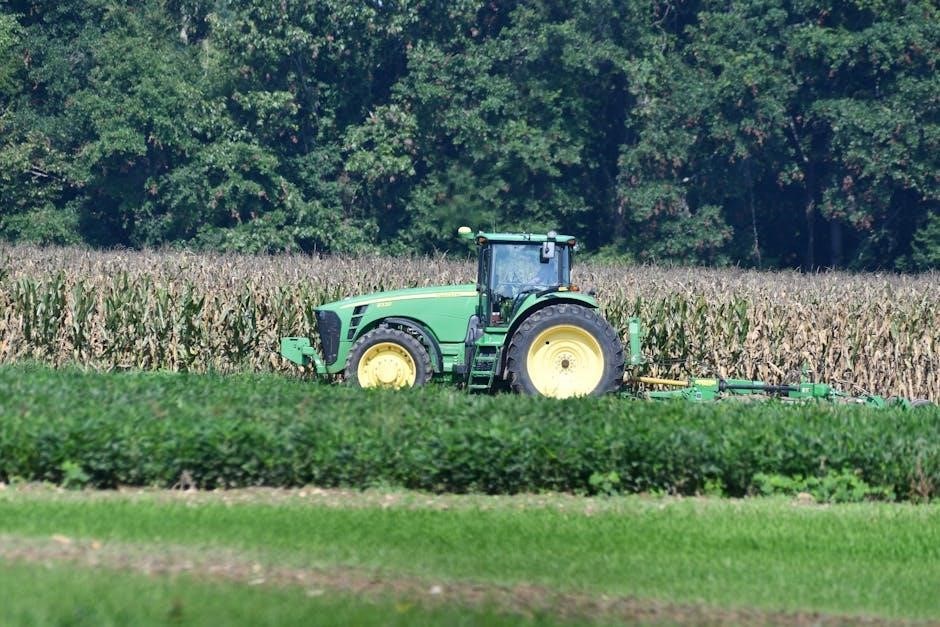
Maintenance and Routine Upkeep
Regular maintenance ensures the John Deere 7000 Corn Planter operates efficiently. Daily checks include lubrication and fluid levels. Weekly inspections cover wear parts and hydraulic systems. Monthly tasks involve cleaning and replacing filters. Winterizing protects equipment from corrosion and freezing. Proper upkeep extends the planter’s lifespan and prevents unexpected downtime during critical planting seasons.
6.1 Daily Maintenance Tasks
Daily maintenance for the John Deere 7000 Corn Planter involves checking lubrication levels, ensuring proper fluid levels, and inspecting seed meters for blockages. Farmers should also examine chains and sprockets for wear, clean residue from planter components, and verify tire pressure. Regular greasing of moving parts and monitoring hydraulic connections are critical to prevent malfunctions. These daily checks ensure smooth operation and minimize downtime during planting seasons.
6.2 Weekly and Monthly Maintenance Schedules
Weekly maintenance includes lubricating all moving parts, checking fluid levels, and inspecting tire pressure. Monthly tasks involve detailed inspection of chains, sprockets, and seed meters for wear or damage. Hydraulic lines should be checked for leaks, and planter frames cleaned of debris. These schedules help prevent wear and tear, ensuring optimal performance and reducing the risk of breakdowns during critical planting periods.
6.3 Winterizing the Planter
Winterizing the John Deere 7000 Corn Planter involves draining hydraulic fluid and fuel to prevent freezing. Lubricate all moving parts to protect against corrosion. Inspect and repair any worn or damaged components. Apply rust-inhibiting coatings and store the planter in a dry, sheltered area. Proper winterization ensures the planter remains in optimal condition for the next planting season and reduces the risk of costly repairs.
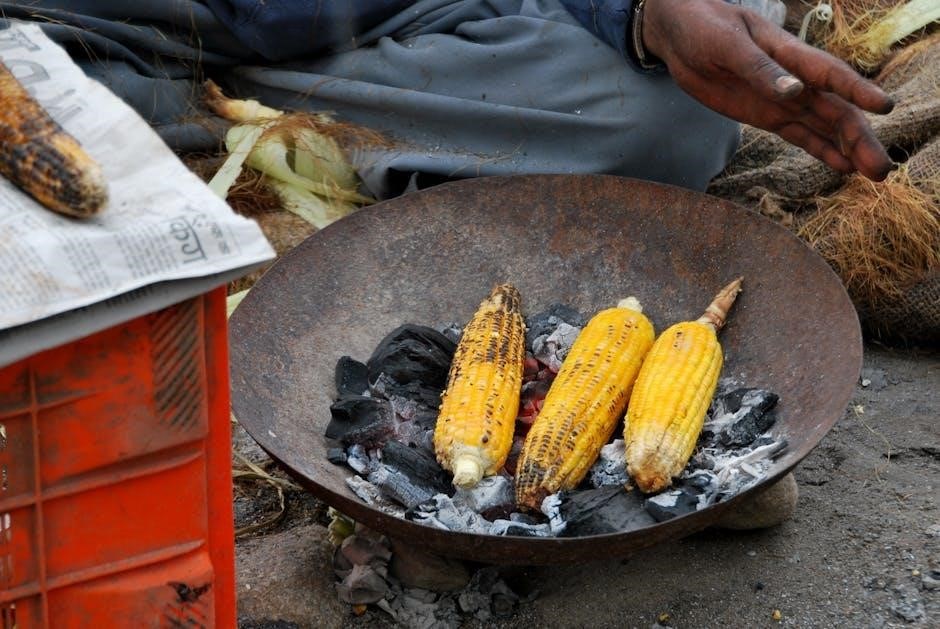
Troubleshooting Common Issues
Troubleshooting the John Deere 7000 Corn Planter involves identifying issues like seed blockages, hydraulic leaks, or sprocket misalignment. Refer to the manual for diagnostic steps and solutions.
7.1 Identifying and Diagnosing Problems
Identifying issues with the John Deere 7000 Corn Planter starts with observing machine performance. The manual provides diagnostic steps, such as checking for seed blockages or hydraulic leaks. Regular inspections and error code analysis help pinpoint problems. Common issues include metering inaccuracies or sprocket misalignment. Refer to the manual’s troubleshooting charts for detailed guidance on diagnosing and resolving these problems efficiently to minimize downtime and ensure optimal planting performance.
7.2 Resolving Seed Metering Issues
To address seed metering issues, start by inspecting the seed meter for blockages or damage. Clean or replace worn-out components, such as brushes or singulators. Check the seed disc for proper alignment and ensure it matches the seed size. Calibrate the metering system according to the manual’s specifications. Regular lubrication of moving parts and adjusting the metering drive sprockets can prevent seed delivery problems. Proper maintenance ensures accurate seed placement and spacing during planting operations.
7.3 Fixing Hydraulic and Mechanical Failures
For hydraulic issues, inspect hoses and connections for leaks or damage. Replace worn or damaged components and ensure proper fluid levels; Mechanical failures often involve sprocket alignment or chain wear. Lubricate moving parts regularly and check for loose bolts. Refer to the manual for specific torque settings. Addressing these issues promptly prevents further damage and ensures smooth planter operation during planting seasons. Always follow safety guidelines when performing repairs.

Calibration and Adjustment
Calibration and adjustment are critical for optimal planter performance. Ensure seed meters, depth settings, and hydraulic pressure align with soil conditions. Follow manual guidelines for precise adjustments.
8.1 Calibrating the Seed Meter for Accurate Planting
Calibrating the seed meter ensures precise seed placement and spacing. Use the provided chart in the manual to match seed size with correct sprocket combinations; Adjust the meter according to soil type and seed variety for consistent planting. Regular calibration minimizes waste and optimizes germination rates. Always test the meter after adjustments to ensure accuracy before planting. Proper calibration is key to achieving uniform seed distribution and maximizing yield potential.
8.2 Adjusting the Planter’s Depth and Pressure
Proper depth and pressure adjustments ensure optimal soil contact and seed placement. Follow the manual’s guidelines to set the planter’s depth for varying soil conditions. Use the depth gauge to ensure uniform planting. Adjust pressure to maintain consistent seed-to-soil contact, preventing over-compaction. Regular checks of gauge wheels and springs are crucial for accurate seed placement. Proper adjustments maximize germination rates and promote uniform plant growth, leading to higher yields and better crop performance.
8.3 Synchronizing the Planter with the Tractor
Synchronizing the planter with the tractor ensures precise seed placement and optimal field performance. Adjust the planter’s sprocket ratios to match the tractor’s speed, as detailed in the manual. Proper alignment of the planter’s frame with the tractor’s hitch is critical. Calibrate the planter’s seed meter to the tractor’s ground speed for accurate seed distribution. Regular synchronization minimizes seed overlap and skips, ensuring uniform planting and maximizing yield potential.
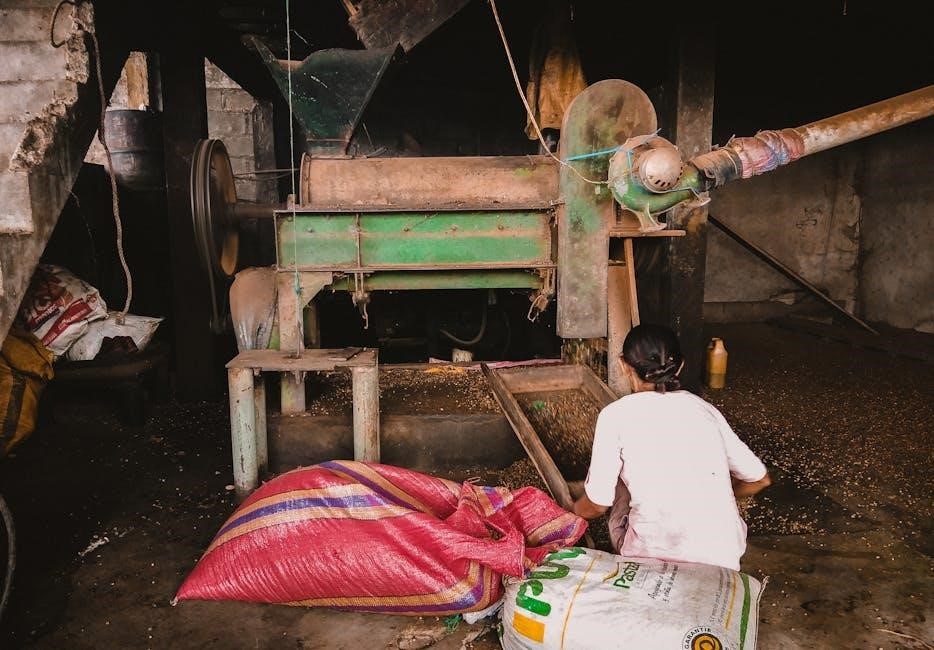
Accessories and Attachments
John Deere 7000 Corn Planter Manual highlights various accessories and attachments to enhance performance. Optional row markers, seed monitors, and fertilization systems are available. The planter supports 4-, 6-, 8-, 12-, 16-, and 18-row configurations, offering flexibility for different farming needs. These attachments ensure precise seed placement and efficient crop management.
9.1 Optional Accessories for Enhanced Performance
The John Deere 7000 Corn Planter Manual details optional accessories to boost efficiency. These include row markers for accurate seed placement, seed monitors for real-time tracking, and fertilization systems for precise nutrient application. Additional attachments like different row units and spacing adjustments allow customization to suit various soil types and crop requirements, ensuring optimal planting performance and versatility in diverse farming conditions.
9.2 Installing and Maintaining Attachments
Installing attachments on the John Deere 7000 Corn Planter requires precise alignment and adherence to torque specifications. Regular lubrication of moving parts and inspection of bolts ensure optimal functionality. Maintenance involves cleaning and replacing worn components, while proper storage during off-seasons prevents rust. Always refer to the manual for specific instructions to ensure long-term performance and reliability of all installed accessories.
9.3 Compatibility with Other John Deere Equipment
The John Deere 7000 Corn Planter is designed to integrate seamlessly with other John Deere machinery, such as tractors and grain drills. Its universal compatibility ensures efficient operation across a range of farming setups. Farmers can pair it with models like the 7100 Folding Integral Max-Emerge Planters or other John Deere equipment, streamlining planting and harvesting processes for optimal agricultural productivity and versatility in the field.
Frequently Asked Questions (FAQs)
Find answers to common questions about planter operation, troubleshooting, and maintenance. Discover solutions to frequent issues and tips for maximizing efficiency and productivity with your John Deere 7000 Corn Planter.
10.1 Common Questions About Planter Operation
Common questions include how to calibrate seed meters, adjust planting depth, and synchronize the planter with the tractor. Users also inquire about resolving seed spacing issues and hydraulic malfunctions. Tips on optimizing planting rates and troubleshooting are frequently sought. The manual provides detailed guidance on these topics, ensuring smooth operation and maximizing efficiency during planting seasons. Refer to the manual for specific solutions and step-by-step instructions.
10.2 Solutions to Frequently Encountered Problems
Common issues with the John Deere 7000 Corn Planter include inconsistent seed spacing, hydraulic leaks, and depth control malfunctions. Solutions involve recalibrating the seed meter, inspecting hydraulic lines for damage, and adjusting gauge wheels for proper depth. Regular lubrication of chains and sprockets can prevent mechanical failures. Ensuring proper tractor-planter synchronization also resolves many operational issues, optimizing planting efficiency and reducing downtime during critical farming seasons.
10.3 Tips for Maximizing Planter Efficiency
For optimal performance, ensure proper calibration of the seed meter and depth control. Regularly inspect and maintain hydraulic systems to prevent leaks and pressure fluctuations. Pre-season checks of chains, sprockets, and gauge wheels are crucial. Synchronize the planter with the tractor’s speed and implement precise soil penetration adjustments. Proper tire inflation and wheel alignment also enhance stability and planting accuracy, ensuring maximum efficiency and uniform seed distribution across the field.
The John Deere 7000 Corn Planter Manual provides comprehensive guidance for safe, efficient, and productive farming. Proper maintenance and operation ensure optimal performance and higher yields.
11.1 Summary of Key Points
The John Deere 7000 Corn Planter Manual is a comprehensive guide for farmers, detailing safety, maintenance, and operation best practices. It emphasizes precision agriculture, offering solutions for seed metering, depth adjustment, and troubleshooting. By following the manual, users can maximize planting efficiency, reduce downtime, and achieve higher yields. The guide also highlights the importance of regular maintenance and calibration for optimal performance, ensuring long-term productivity and reliability.
11.2 Final Tips for Effective Planter Use
For optimal results, ensure proper calibration of the seed meter and depth settings. Regularly inspect and maintain hydraulic and mechanical components. Monitor tire pressure and alignment for stability. Use genuine John Deere parts for reliability. Always follow safety guidelines and fold the planter correctly for transport. By adhering to these tips and the manual’s instructions, you’ll maximize efficiency, reduce wear, and extend the lifespan of your John Deere 7000 Corn Planter.
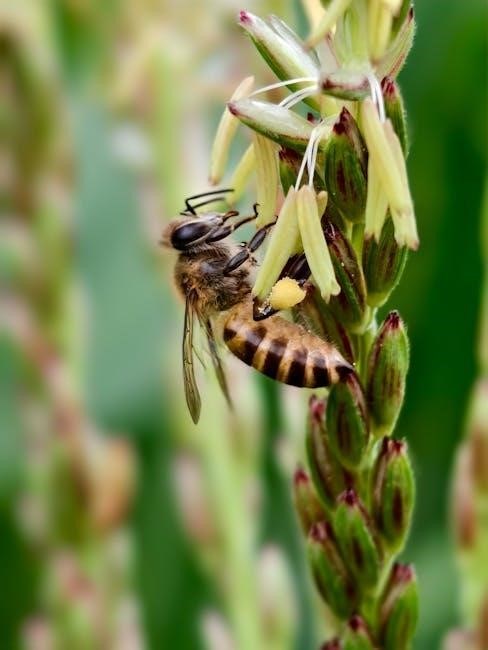
Additional Resources and References
Visit the official John Deere website for downloadable PDF manuals and guides. Explore online forums and communities for user experiences and troubleshooting tips. Refer to the John Deere 7000 Corn Planter Manual for detailed instructions and specifications to ensure optimal performance.
12.1 Recommended Reading and Manuals
For comprehensive understanding, refer to the John Deere 7000 Corn Planter Operator’s Manual and Service Manual. These resources provide detailed instructions for operation, maintenance, and troubleshooting. Additionally, the Parts Catalog and Technical Publications offer diagrams and specifications. Visit the official John Deere website or authorized dealers for genuine manuals. These materials ensure optimal performance and longevity of your equipment, covering all aspects of planting and upkeep.
12.2 Online Forums and Communities
Engage with online forums and communities dedicated to John Deere equipment. Websites like John Deere’s official forums, AgTalk, and Reddit’s r/FarmingTechnology offer valuable discussions and support. These platforms provide real-world insights, troubleshooting tips, and advice from experienced operators. Participating in these communities can help you optimize your planter’s performance and address specific challenges with input from fellow users and experts in agriculture.
12.3 Contact Information for John Deere Support
For direct assistance with your John Deere 7000 Corn Planter, contact John Deere’s customer support team. Visit their official website at https://www.deere.com for regional office details and service centers. You can also call their customer service hotline at 1-800-537-8233 or email them via the website’s contact form. Additionally, local dealerships provide personalized support and are listed on the John Deere website for easy access.
